Are you a gardener who is wondering when the optimal time is to transplant tomato seedlings? Growing tomatoes from seeds can be especially rewarding since they will be tailored to your specific climate and growing conditions. To ensure that your plants healthily mature, it’s important for gardeners to understand what factors should be taken into account when transplanting tomato seedlings. Transplanting at the wrong time can hinder agricultural success significantly so timely insight on this process is invaluable for an experienced or novice farmer alike. In today’s blog post, we take a look at all aspects of transplanting—from understanding which type of soil works best to considering the maturity of tomato plants—so that you have a clear workflow guide going forward!
What is Tomato Transplanting?
Tomato transplanting is the process of moving tomato seedlings from one location to another. Transplanting is necessary when growing tomatoes in raised beds or containers, as it can help keep the plants healthy and productive for a longer period of time. It also allows gardeners to space their plants properly and control spacing better so that weeds don’t get out of hand.
When to Transplant Seedlings?
For optimal growth, it’s best to transplant tomato seedlings when the plant is about 6-8 inches tall and has at least two sets of leaves. When transplanting, be sure to pick a spot with full sun exposure and good drainage. The soil should be moist but not wet. If necessary, add some compost or aged manure to the soil before planting for an extra boost of nutrients. Plant each seedling deeply into the ground, up to the first set of leaves; this encourages root growth and will make your plants stronger and more resilient in the long run. Water your transplants immediately after planting so they can settle in quickly.
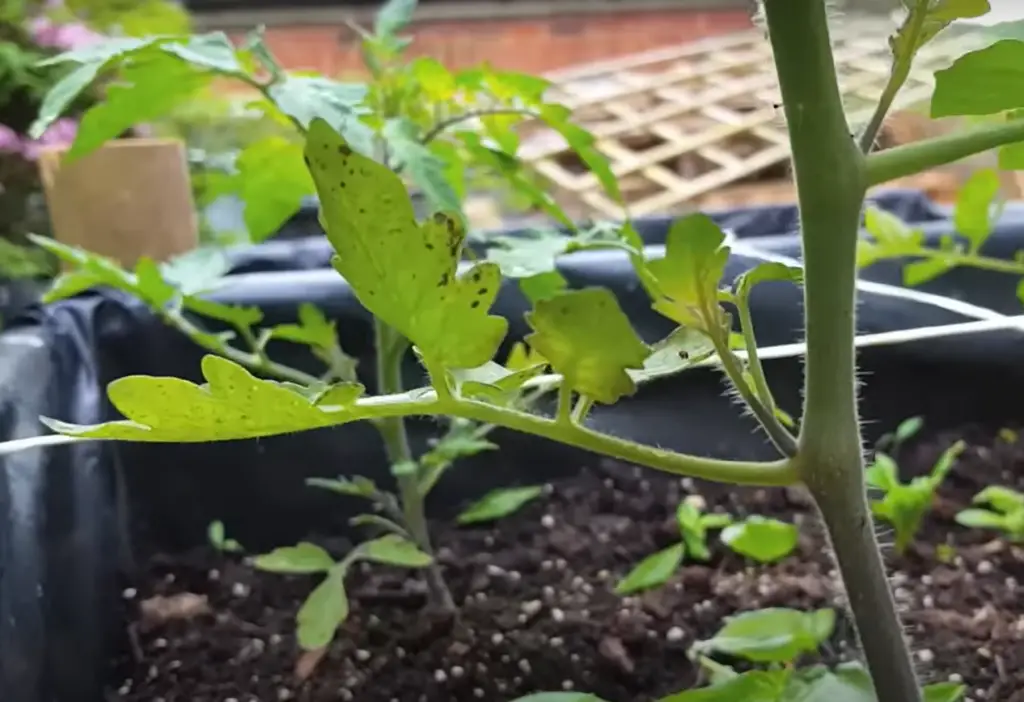
Make sure to monitor the moisture level of the soil regularly during dry spells; providing enough water is essential for proper growth and development. Staking or caging your tomato plants can also help support their stems as they grow. Finally, make sure to regularly fertilize your plants to keep them healthy. With a little extra care at the start, you’ll be rewarded with an abundant harvest of delicious tomatoes! [1]
Getting Ready for Transplanting
You should wait until the tomato seedlings have two sets of leaves that look like the actual plant (not the small initial leaves called cotyledons), before you transplant them. It is important to harden off tomato seedlings about a week before you plan to transplant them outside. To do this, move the plants outdoors for short periods and then bring them back inside under controlled conditions. This will acclimatize the plants to outdoor conditions and reduce transplant shock. If your seedlings don’t get enough sunlight indoors, you can start hardening them off earlier than one week prior by placing them in filtered or indirect sunlight for a few hours each day.
Planting in soil that is too cold can stunt the plants’ growth. Tomatoes are sensitive to changes in temperature, so you should avoid transplanting during very hot or cool weather. The best time to transplant tomato seedlings is on a cloudy day or late afternoon when temperatures have cooled down.Plant Selection
Choose Healthy Plants with Good Color and Form
Select tomato seedlings in healthy condition and with good color. Check for a strong stem, green foliage and show no signs of disease or damage from insects. Look at the overall shape and form of the plant to determine if it is growing properly and will be able to withstand further transplanting.
Checked Roots for Signs of Damage or Disease
Before transplanting, inspect the root system to make sure there are no signs of damage or disease. The roots should be firm and dense and look healthy. Avoid any seedlings with wilted leaves, yellowing foliage, stunted growth or other signs of stress.
Select the Right Size Plant for Your Garden
Transplanting tomato seedlings should take place when the plants are 4-6 inches tall. This ensures that the roots have developed enough to survive in the outdoor environment, and that they have not become pot-bound or too crowded. If you wait too long to transplant, the plant may suffer from shock or dieback due to a lack of space for root growth. [2]
Choose Plants That Are Appropriate for Your Climate
When growing tomatoes, make sure to select varieties that will grow well in your climate and season conditions. Some varieties require more heat than others, so it’s important to research each variety before planting.
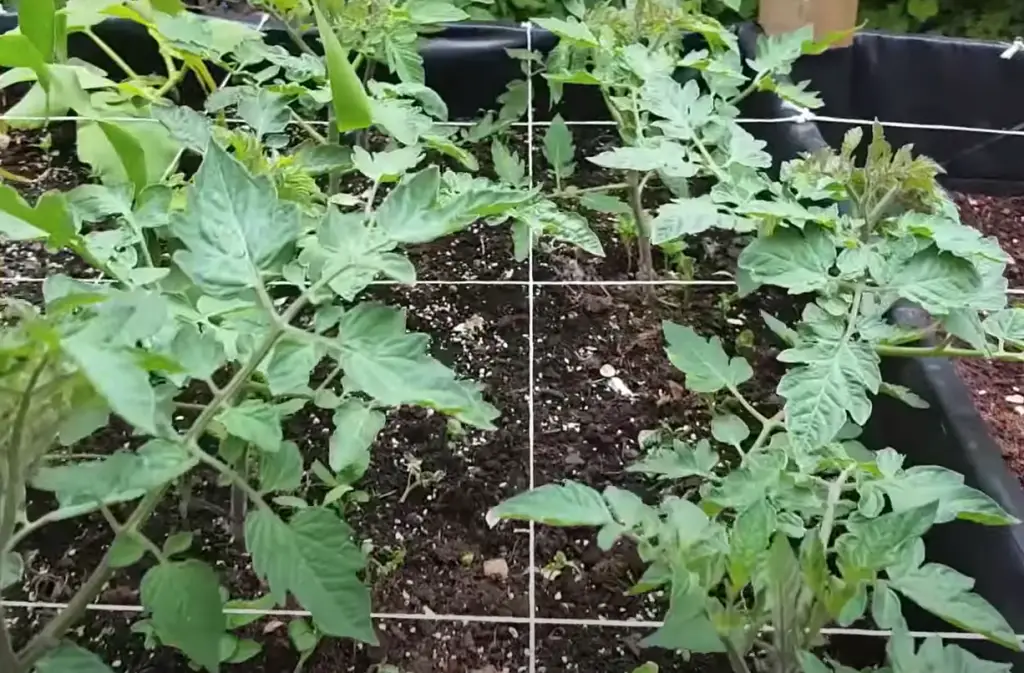
The ideal time for transplanting varies depending on what type of tomato you’re growing; some should be transplanted earlier in the season, while others don’t need to be transplanted until later.
Soil Preparation and Watering
Preparing the Soil for Planting
When transplanting your tomato seedlings, it is important to prepare the soil before planting.
If the soil is too dry or too wet, add compost or other organic matter to balance it out. The soil should also be loose enough for roots to spread easily when transplanting.Moisture for a Healthy Start
It is important to water your tomato seedlings before transplanting. Make sure that you use lukewarm water and do not over water the soil as this can cause root rot. If there has been heavy rain, it may be best to wait a few days before transplanting so that the soil isn’t too saturated with moisture. Keep in mind, however, that your tomatoes will need regular watering after they are transplanted – at least 1 inch per week.
Planting Instructions
Preparing the Hole for Transplanting
Before transplanting your tomato seedlings, it is important to prepare the holes in which you will plant them. Begin by using a spade or trowel to create a hole that is twice as wide and just as deep as the root ball of your seedling; this ensures that there is plenty of room for roots to grow. When prepping the area around the hole, be sure to remove any weeds and break up compacted soil.
Softening Roots to Encourage Growth
Once the hole is prepared, it’s time to transplant your tomato seedling.
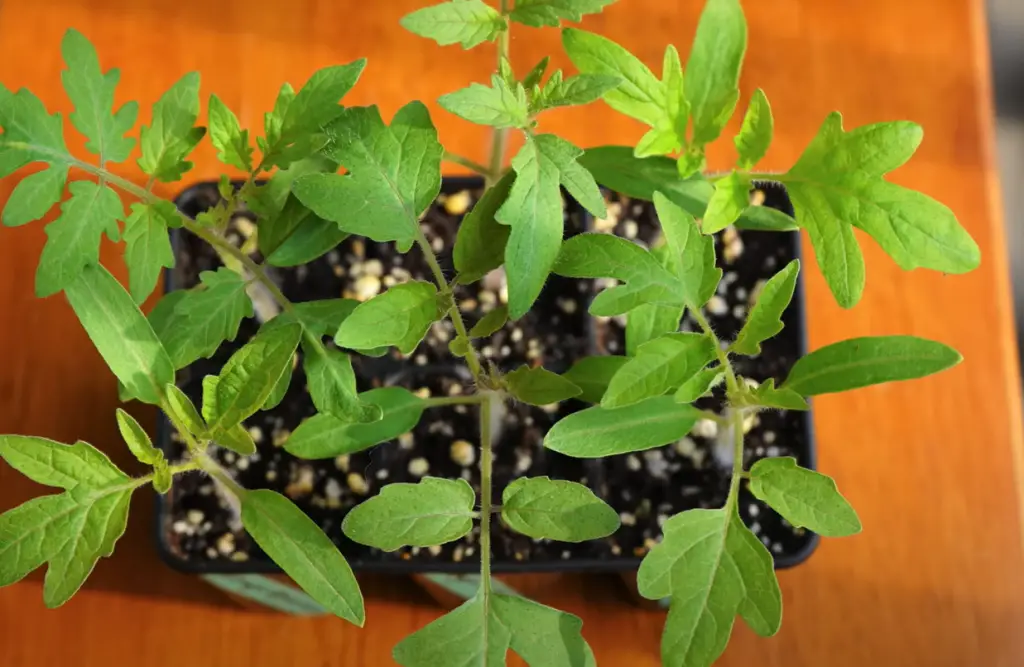
Gently remove the root ball from its container and unfold any roots that may have become tangled or bound together. This helps promote healthy growth as it encourages the roots to spread out in search of nutrients and moisture.
Securing Plants in the Ground
Once you have loosened the roots, place the seedling in the hole and fill it with soil. Make sure that the stem of your plant is covered up to its first set of leaves; this will help support the growth of a strong root system. Gently firm down the soil around the roots to secure them in place. Finally, water the area thoroughly and provide an extra layer of mulch for insulation. [3]
Aftercare
Water Regularly and Keep Soil Moist
Tomato seedlings are sensitive to drying out, so it’s important to water your transplants on a regular basis and ensure that the soil remains moist. Watering in the morning is best so that your seedlings have enough moisture throughout the day without getting overly soggy overnight.
Fertilizing Your Tomato Plants
Tomato plants require nutrients in order to produce healthy and abundant fruits. Fertilize your transplants after they have settled in their new environment with a high-quality fertilizer, such as an organic tomato fertilizer or liquid seaweed extract. Be sure to follow the directions on the package for proper application and timing.
Pruning Tomatoes for a Healthy Harvest
As your tomato plants grow, you may need to prune them in order to encourage bushier and healthier growth. Pruning should be done after the plant has become established in its new environment.
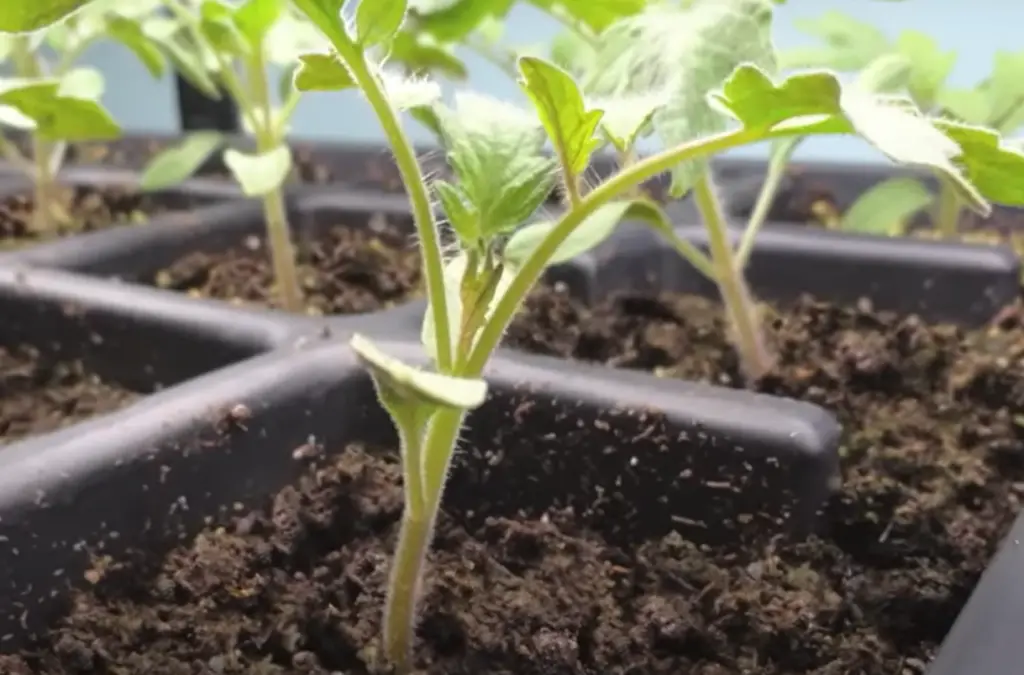
If left unchecked, some varieties can reach heights of 6 feet or more and will produce fewer fruits. Pruning helps manage size and encourages more blooms for higher yields of delicious tomatoes! [4]
Common Issues with Transplanting Tomatoes
Temperature Stress or Shock
When tomato seedlings are transplanted, the surrounding temperature can cause stress or shock to the plant. To avoid this issue, tomato seedlings should only be transplanted when temperatures are suitable for the plant’s growth rate and survival. The ideal time for transplanting tomatoes is during springtime when temperatures hover between 65-70°F (18-21°C).
Edema – A Common Issue in Transplanting Tomato Seedlings
When transplanting tomato seedlings, it is important to watch for signs of edema. Edema is a disorder caused by an accumulation of excessive water in the plant cells. It results in swollen or thickened areas on the stems and leaves and can lead to further issues such as stunted growth and even death.
Root Rot – Avoid It with Healthy Practices
Root rot is another risk when transplanting tomato seedlings. This can be caused by poor drainage or overwatering of the soil, and it can quickly decimate a young tomato plant’s root system. To avoid this, ensure that your garden beds have proper drainage and allow the soil to dry out between waterings. Drip irrigation systems are also an excellent way to combat root rot and help keep your tomato plants healthy.
Choose the Right Variety for Your Garden
When it comes to transplanted tomatoes, the variety that you choose can make a big difference. Heirloom varieties of tomato plants may be more prone to transplant shock so they should not be considered for late-season planting. Look for hybrid varieties instead which are usually recommended for late-season planting due to their increased resistance to disease and heat tolerance. Choose tomato plants with short internodes (the distance between each set of leaves). These will have stronger stems making them better suited for transplanting. Also look for stocky, healthy looking seedlings with well developed root systems as these will establish themselves best when transplanted.
Finally, always check the tag on the plant before purchasing or transplanting – this will tell you how many days until you can expect to harvest the tomatoes. This will give you an idea of when to transplant your tomato seedlings in order to get the most out of your garden. [5]
Do Tomato Plants Droop After Transplanting?
Transplanting tomato seedlings can be a stressful process for the plant. When done properly, transplant shock should not be an issue; however, it is not uncommon to see some wilting of the leaves during the adjustment period.
To reduce transplant shock, make sure you harden off your seedlings before planting them in their final location. This involves gradually introducing the plants to direct sunlight over several days so that they have time to adjust. Additionally, water your transplanted tomatoes well and monitor their progress over the next few weeks – if needed, apply additional fertilizer or organic mulch to give them a boost. With proper care, tomato transplants should adjust to their new environment and begin to thrive.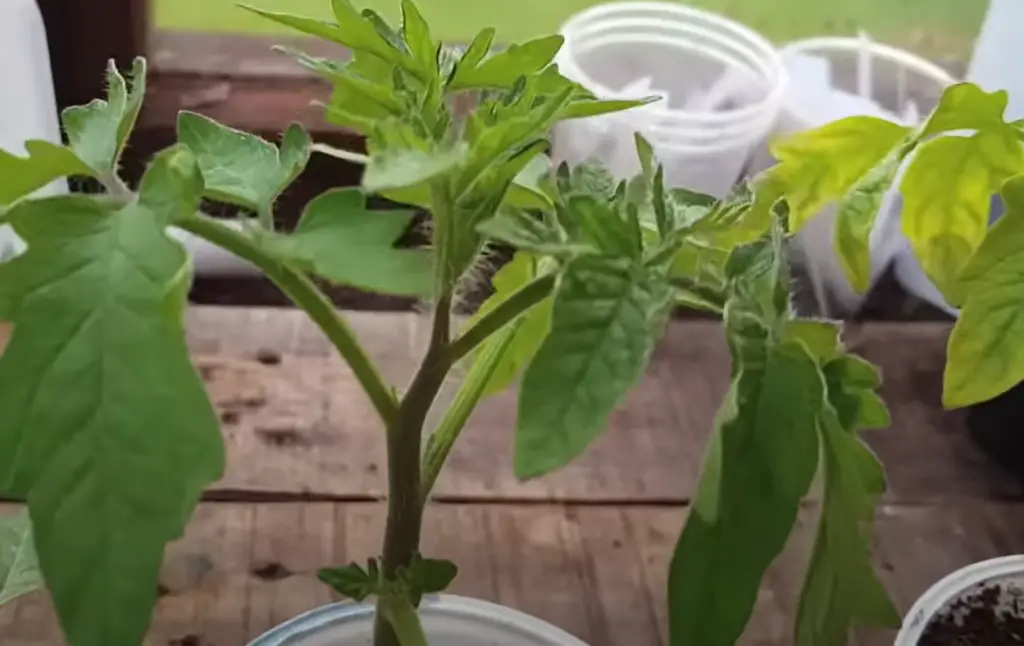
Another important factor to consider when transplanting tomatoes is the timing. Tomato plants do best when they are transplanted during cooler spring or fall weather. Avoid planting in hot summer months as this can cause additional stress for the plants. If you must plant during the warm summer months, make sure you provide plenty of water and shade to protect your seedlings from scorching sun and heat waves. Transplanting at the right time will give your tomato seedlings a better chance of surviving transplant shock and growing into healthy plants that produce lots of delicious fruits!
How Often Do You Water Tomatoes?
When transplanting tomato seedlings, it is important to ensure that they receive adequate water. Tomatoes need about 1-2 inches of water each week. Depending on your climate and soil drainage, you may need to water more or less. In areas with hot summers, tomatoes may need to be watered twice a week. It is best to water in the morning so that the ground has time to dry out during the day and prevent fungal diseases from taking root in the damp soil. If possible, try not to get the foliage wet when watering as this can encourage disease development too. Mulching around your plants will help keep moisture in the soil for longer periods of time and also reduce weeds which compete for nutrients and water. Keep an eye on the moisture level of the soil to maintain optimal growing conditions for your tomatoes.
What Are the Signs of Overwatering Tomatoes?
If you overwater your tomato plants, it can lead to a variety of problems. You will know that your tomato seedlings are being overwatered if you observe the following signs:
- Wilting – Tomato plants may start wilting due to lack of oxygen in the soil, which is caused by too much water and not enough drainage.
- Discoloration – Overwatered tomatoes may look yellow or light green with dark green spots on the leaves. This is usually accompanied by curling of the leaves as well.
- Blisters – If there is an excess amount of water in the soil, blisters may form on the leaves and stems of tomatoes.
- Stems become weak/brittle– Stems of tomato plants can become weak and brittle if there is too much moisture in the soil.
- Root Rot – Too much water may cause root rot, which is a type of fungal disease that causes roots to decay and die. [6]
If you notice any of these signs on your tomato seedlings, it’s important to adjust your watering schedule or improve drainage immediately. This will help ensure that your tomatoes get the right amount of water so they can grow healthy and strong!
How Do You Know If Your Tomato Plants Are Healthy?
Before you transplant your tomato seedlings, it’s important to ensure they’re healthy and ready for the move. You want to select only the healthiest plants that have shown signs of growth — such as at least two sets of true leaves on each stem — in order to give them the best chance of success after being transplanted. Examine the stems and foliage for any discoloration or strange spots that could indicate disease or pests.
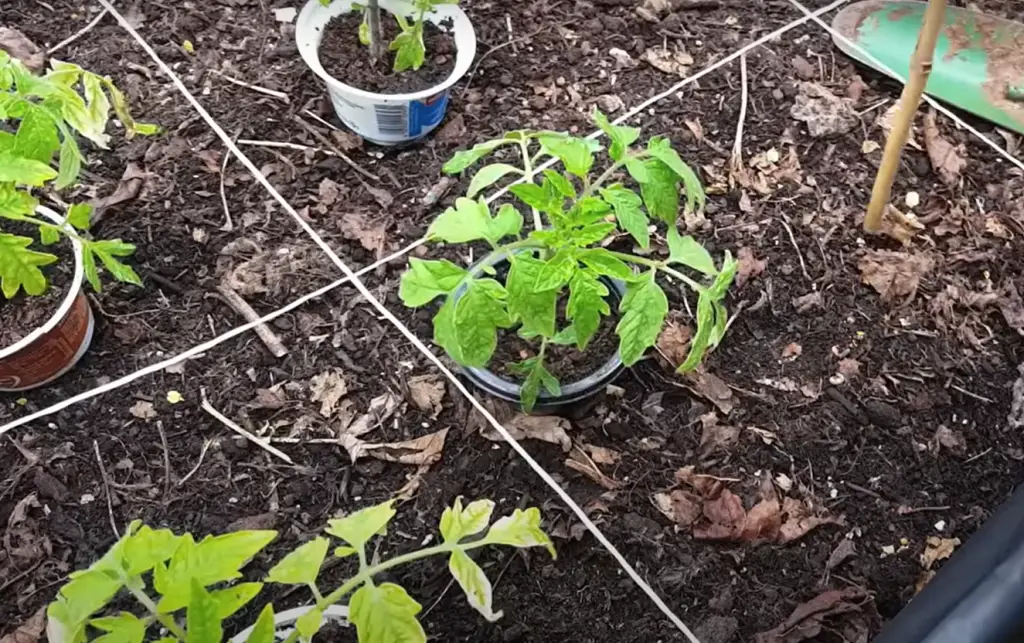
If you spot anything suspicious, discard those plants and choose only those with bright green foliage and sturdy stems. Check soil moisture regularly before transplanting, ensuring it’s not too wet or dry; tomatoes can quickly become stressed if conditions are not right. Finally, check for root binding: Healthy roots should easily slide out of the soil when gently pulled. If needed, carefully loosen them with a knife or fork before transplanting.
FAQs
Do I need to transplant my tomato seedlings?
Yes, you should transplant your tomato seedlings after they have at least two true leaves and the roots are starting to fill the pot. If you wait too long, the plants will become root bound in their small pots and be more difficult to transplant.
What is the best time of day to transplant tomatoes?
Transplanting tomato seedlings is best done when the temperature is mild, usually in the morning or evening. It’s important to avoid transplanting in midday heat or during the hottest part of the afternoon because seedlings can be easily damaged by extreme temperatures and sun exposure. The soil should also be moist before transplanting, as this will help reduce shock and ensure that roots make proper contact with the ground. If planting in pots or containers, wait a day after filling them with soil to give time for it to settle before adding tomato plants. Taking all these precautions will help tomato seedlings get off to a good start!
How often should I water transplanted tomatoes?
When transplanting tomato seedlings, you should make sure to water them deeply and slowly. Deep watering helps to encourage deeper root growth, which is essential for the health of your plants. Deep watering should be done once every seven to ten days after transplanting. Make sure that you never let the soil dry out completely in between waterings, as this can cause stress on the plant and may even lead to death. Additionally, mulching around the base of each plant can help ensure that moisture stays locked into the soil longer. If transplanted tomatoes are planted during summer months or if they are planted in an area with high temperatures, more frequent watering may be required to ensure proper hydration and healthy growth. To check if your tomato plants need water, simply insert your finger into the soil. If it feels dry, water the plant. If it feels damp or moist, wait a few more days before watering again.
What type of soil is best for transplanting tomatoes?
When transplanting tomato seedlings, it is best to use a well-draining soil mix that is high in organic matter. The soil should also be slightly acidic (pH 6.0-7.0) and have an abundance of nutrients available for the plants. To prepare the soil, gardeners can add compost and aged manure prior to planting. Additionally, it is best to avoid fresh manure as this can lead to nutrient burn and other issues for the tomato plant. When choosing a soil mix, look for one specifically designed for tomatoes or vegetables as these are most likely to provide the necessary nutrients needed for healthy growth.
Can you transplant tomatoes at any time during the growing season?
No, transplanting tomatoes into the garden should be done when the weather is mild and the soil is warm. Tomatoes are sensitive to cold temperatures and will not do well in extremely hot conditions either. Planting too early can cause stunted growth and reduce yields, while planting too late will prevent plants from growing to their full potential before winter sets in. The best time to transplant tomato seedlings is generally two or three weeks after the last expected frost date for your area, when nighttime temperatures remain above 50 degrees Fahrenheit. Additionally, the tomato seedlings should have developed at least four true leaves before you consider them ready for transplanting into the garden.
Useful Video: When to Transplant Tomato Seedlings
Conclusion
Transplanting tomato seedlings is an important step in the growth of tomatoes and can have a major impact on their yield and harvest. It’s important to time your transplant correctly so that you can maximize the potential of your tomato crop. Generally, it’s best to wait until the soil temperature in your garden has reached at least 55 degrees Fahrenheit before transplanting your seedlings. Doing this will give them enough time to form strong root systems and prepare for the summer heat. It’s also best to provide extra protection from the sun by using shade cloth or other methods when possible. With careful planning and preparation, you can ensure that your tomato plants get off to a great start!
Good luck with your gardening journey!
References:
- https://www.homesandgardens.com/gardens/when-to-transplant-tomato-seedlings
- https://youshouldgrow.com/transplanting-tomato-seedlings/
- https://www.gardenbetty.com/how-to-repot-tomato-seedlings/
- https://www.gardenerbasics.com/blog/when-to-transplant-tomato-seedlings
- https://www.gardeningknowhow.com/edible/vegetables/tomato/transplant-tomato-plants.htm
- https://www.urbanorganicyield.com/when-to-transplant-tomato-seedlings/





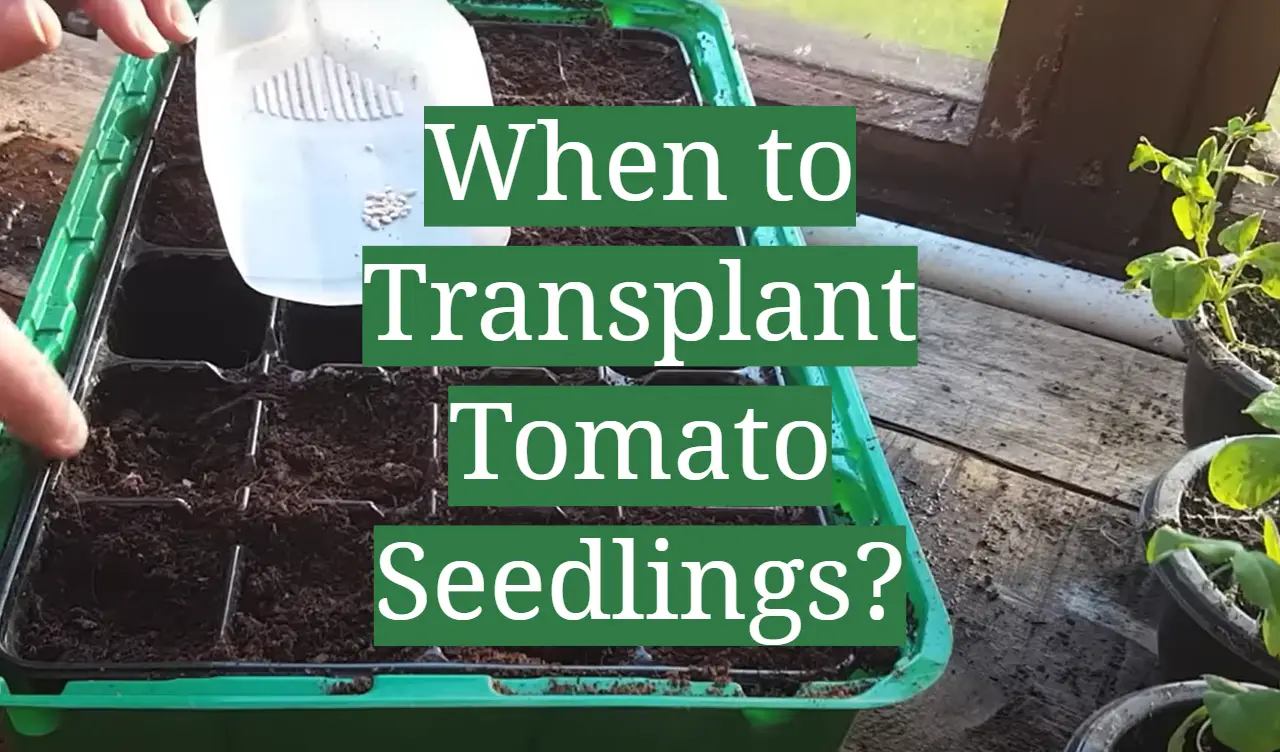




Leave a Reply
View Comments